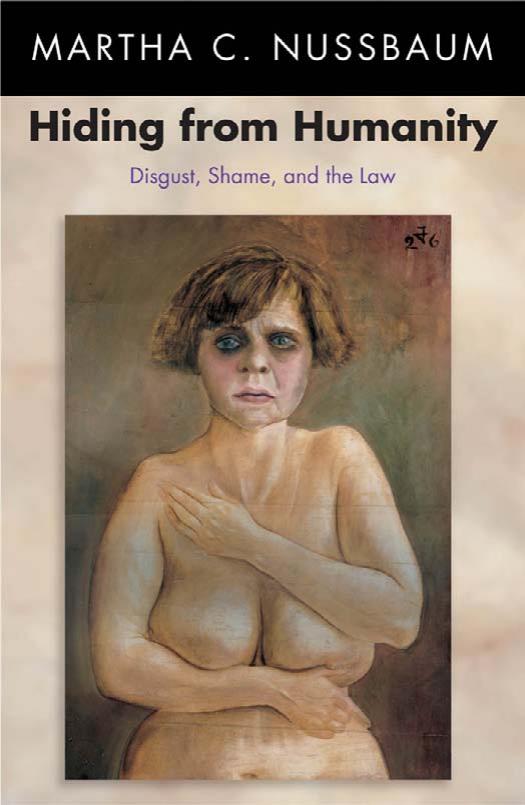Hiding from Humanity: Disgust, Shame, and the Law by Martha C. Nussbaum

Author:Martha C. Nussbaum [Nussbaum, Martha C.]
Language: eng
Format: epub, pdf
Publisher: Princeton University Press
Published: 2009-01-10T08:00:00+00:00
VII. Stigma and Brand: Shame in Social Life
All societies mark some people as normal. As Goffman trenchantly observed, all deviations from the normal are marked as occasions for shame. Each person in a society looks out at the world from the perspective of its norm of normalcy. And if what he or she sees when looking in the mirror does not conform to that norm, shame is the likely result. Many occasions for social shame are straightforwardly physical: handicaps and disabilities of various kinds, but also obesity, ugliness, awkwardness, lack of skill in sports, lack of some desirable secondary sexual characteristic. Some are features of the person’s form of life: sexual minorities, criminals, and the unemployed are major recipients of stigma.
These latter types of deviation from the normal are not branded on the face. Societies have, in consequence, found it convenient to inflict a visible mark. The word “stigma” is in fact the Greek term for this mark.111 In the ancient Greek world the word-group (noun stigma, verb stizô) referred to tattooing, not to branding,112 and tattoos were widely used for penal purposes. As the edict of Constantine records, the mark was frequently applied to the face, in order to shame the offender in a publicly visible way.113 Similar practices are found in many societies, some involving branding as well as tattooing. And the evidence shows, time and again, that those singled out for branding include not just those convicted of a particular offense, but various other undesirables: slaves, the poor, members of sexual and religious minorities.
What is going on when societies stigmatize minorities? How might this behavior be connected to the dynamics of human development I sketched out above? At this point any account is bound to be highly conjectural, but with shame as with disgust, we are dealing with phenomena of such ubiquity that we ought at least to try to understand them. At the heart of the matter is the strange notion of the “normal,” with its way of linking what might seem to be two altogether distinct ideas.114 On the one hand, there is the idea of statistical frequency: the normal is the usual, that which most people are or do. The opposite of “normal” in that sense is “unusual.” On the other hand there is the notion of the good or normative: the normal is the proper. The opposite of “normal” in this sense is “inappropriate,” “bad,” “disgraceful.” Social notions of stigma and shame typically link the two rather closely together: whoever does not do what most people do is treated as disgraceful or bad. The puzzle is why people should ever have drawn this peculiar connection. For, obviously enough, what is typical may or may not be very good. Bad backs, bad eyes, and bad judgment are all very typical, and Senator Roman Hruska’s claim in the 1970 Senate debate that intellectual mediocrity should be represented on the U.S. Supreme Court met the widespread mockery it deserved. As Mill observed, much progress in human
Download
Hiding from Humanity: Disgust, Shame, and the Law by Martha C. Nussbaum.pdf
This site does not store any files on its server. We only index and link to content provided by other sites. Please contact the content providers to delete copyright contents if any and email us, we'll remove relevant links or contents immediately.
| Anthropology | Archaeology |
| Philosophy | Politics & Government |
| Social Sciences | Sociology |
| Women's Studies |
The remains of the day by Kazuo Ishiguro(7684)
Tools of Titans by Timothy Ferriss(7079)
The Black Swan by Nassim Nicholas Taleb(6312)
Giovanni's Room by James Baldwin(6044)
Inner Engineering: A Yogi's Guide to Joy by Sadhguru(6000)
The Way of Zen by Alan W. Watts(5893)
The Six Wives Of Henry VIII (WOMEN IN HISTORY) by Fraser Antonia(4869)
The Power of Now: A Guide to Spiritual Enlightenment by Eckhart Tolle(4860)
Asking the Right Questions: A Guide to Critical Thinking by M. Neil Browne & Stuart M. Keeley(4702)
Astrophysics for People in a Hurry by Neil DeGrasse Tyson(4690)
12 Rules for Life by Jordan B. Peterson(3837)
The Ethical Slut by Janet W. Hardy(3601)
Skin in the Game by Nassim Nicholas Taleb(3557)
Housekeeping by Marilynne Robinson(3531)
The Art of Happiness by The Dalai Lama(3463)
Double Down (Diary of a Wimpy Kid Book 11) by Jeff Kinney(3352)
Skin in the Game: Hidden Asymmetries in Daily Life by Nassim Nicholas Taleb(3338)
Walking by Henry David Thoreau(3300)
Ikigai by Héctor García & Francesc Miralles(3281)
